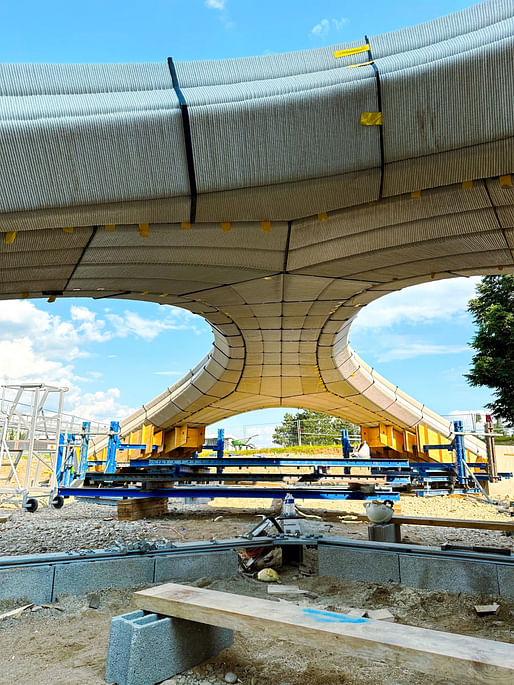
Zaha Hadid Architects has released details of a second collaborative effort with Holcim on a 3D printed bridge concept that was first debuted as part of the 2021 Venice Architecture Biennale.
The new ten-ton Phoenix design offers an evolution of the innovations seen in the previous Striatus bridge, the original blocks of which the team was able to recycle in the second iteration.
For the project, Holcim was able to deliver Phoenix with a 25% overall reduction in CO2 footprint compared to its earlier counterpart, thanks to the use of an updated ECOCycle circular technology and a special proprietary concrete ink that was also developed by the company. The construction was completed recently in Lyon, France, on the grounds of Holcim’s Innovation Hub. Its proponents are now citing it as a milestone for the design industry’s quest to develop low-carbon structural solutions at different scales.
Shajay Bhooshan, head of Zaha Hadid Architects' Computation and Design Group (ZHA CODE), shared: "Phoenix is a significant milestone in technology readiness. It showcases the maturation of integrated design to construction technologies that were initiated with Striatus. There have been improvements in the robustness of the digital design tools, closer alignment with the numerous structural design and circularity-related improvements, tighter integration with robotic concrete printing parameters, and extensive calibration to improve efficiency of production of almost double the number of blocks in less printing time."
Block Research Group at ETH Zürich and incremental3D were both partners in the project. The method they helped to employ in the bridge's construction does away with the need for concrete reinforcement or post-tensioning. Both it and its predecessor were also completed without the creation of any waste at the site and can be disassembled for later use as a pedestrian crossing in different locations.
Block Research Group's co-director Philippe Block said: "Concrete is an artificial stone, and like stone, it does not want to be a straight beam, it wants to be a masonry arch. Following these historical principles allows us to keep materials separated for easy recycling and to dry-assemble the structure for easy deconstruction and reuse. 3D concrete printing allows us to use material only and exactly where needed. The result is a sustainable and truly circular approach to concrete construction."

Holcim says the method can also be used to construct floor slabs of high-rise buildings, offering further low-carbon solutions for builders and architectural designers.
"Thanks to its design principles, Striatus already represented 3D concrete printing in its purest possible form. Now, after two years and in its second iteration, Phoenix adds a largely reduced carbon footprint and permanence according to building codes along with many other further improvements. Consequently, we, the incremental3D team, are very excited about Phoenix, and we are looking forward to many other projects that will evolve in similar spirit," Johannes Megens, the co-founder of incremental3D, added finally.
A timelapse of the bridge's construction can be viewed below.
Are you sure you want to block this user and hide all related comments throughout the site?
No Comments
Archinect
This is your first comment on Archinect. Your comment will be visible once approved.